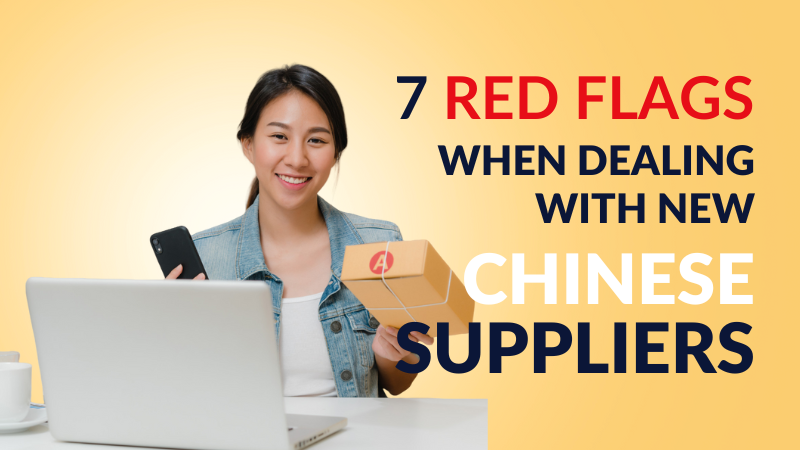7 Red Flags When Dealing with New Chinese Suppliers

Sourcing products from China can offer great advantages—competitive pricing, a vast manufacturing base, and fast production lead times. However, working with new suppliers without proper vetting can lead to delays, poor quality, or even scams. Whether you're an Amazon FBA seller, a small business owner, or a sourcing agent, recognizing the red flags early is crucial to avoiding costly mistakes.
In this article, we'll highlight 7 major red flags to watch for when dealing with new Chinese suppliers, and provide expert tips to help you protect your investment and supply chain.
1. Lack of Verified Business Information
A legitimate Chinese supplier should be able to provide:
Red Flag: If the supplier avoids sharing official documents or refuses to provide a company name you can verify through platforms like Qichacha or AIC.gov.cn, proceed with caution.
Pro Tip: Ask for a Chinese name of the company and cross-check it on government databases to ensure it's a registered business.
2. Prices That Are “Too Good to Be True”
If a new supplier offers a price far below the market average, be wary.
Red Flag: Unrealistically low quotes may indicate:
Low-quality materials
Lack of experience
A bait-and-switch scam
Pro Tip: Get multiple quotes from different suppliers to understand the price range. A reliable supplier offers competitive—but not suspiciously cheap—pricing.
3. No Clear Production Capabilities
A legitimate manufacturer or trading company should be transparent about:
Red Flag: If they can’t answer basic production questions or give vague answers like “Don’t worry, we can do everything,” they might not be the actual manufacturer.
Pro Tip: Request a factory audit, or hire a third-party sourcing company in China to verify their production capabilities.
4. Poor Communication or Pushy Sales Tactics
Communication is key when sourcing from overseas.
Red Flag: Be cautious if:
The supplier is overly pushy to close the deal quickly
Responses are inconsistent or unclear
They disappear for days without notice
Pro Tip: Professional suppliers usually respond within 24–48 hours and are willing to explain details patiently. If communication feels off early on, expect bigger issues later.
5. No Samples or Hesitation to Provide Them
You should always request a product sample before placing a bulk order.
Red Flag: If the supplier:
Pro Tip: Samples are a small investment to ensure product quality, packaging, and branding match your expectations. A trustworthy supplier should encourage it.
6. Unfavorable Payment Terms
Safe payment practices are crucial.
Red Flag: Beware of suppliers who:
Demand full payment upfront
Refuse secure methods like PayPal, Alibaba Trade Assurance, or escrow
Push for payments via Western Union or personal accounts
Pro Tip: Industry standard is 30% deposit and 70% after inspection or before shipment. Stick to traceable and secure methods for protection.
7. Inconsistent Product Quality or Certifications
What you see is not always what you get.
Red Flag: If previous buyers or online reviews mention:
Quality fading after initial orders
Missing certifications (CE, FCC, FDA, etc.)
Non-compliance with your market's safety standards
Pro Tip: Conduct pre-shipment inspections and require certifications before confirming bulk production—especially if you’re importing electronics, beauty tools, or children's products.
Final Thoughts
Dealing with Chinese suppliers can be highly rewarding when done right—but it’s essential to vet every new partner carefully. By recognizing these red flags and following best sourcing practices, you’ll reduce risk and build long-term, successful supplier relationships.
Need Help Vetting Suppliers in China?
At Guangzhou Bright Future, we specialize in sourcing, factory verification, and quality control across China. With over 13 years of experience and a multilingual team on the ground, we help global businesses secure trusted suppliers and avoid sourcing pitfalls.